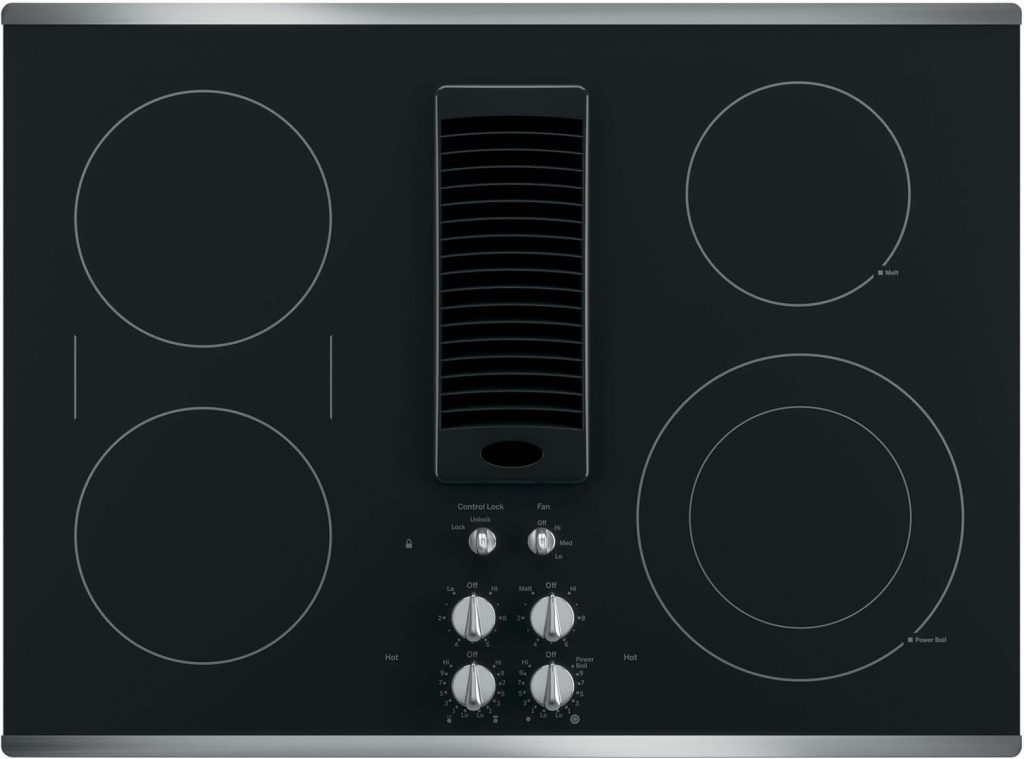
Induction Cooktop with Downdraft: A Smarter Way to Cook Cleanly
Induction cooktops have redefined how we approach cooking, and with the addition of downdraft ventilation, they’re changing the game once again. If you’ve ever dealt with greasy steam or lingering kitchen odors, this combination appliance may be the upgrade your kitchen desperately needs.
What Is Induction Cooking?
Induction technology uses magnetic fields to generate heat directly within compatible cookware—typically ferromagnetic pots and pans—without heating the cooktop surface itself. A copper coil beneath the ceramic surface creates rapid electromagnetic pulses that excite the molecules in the cookware, producing heat from within. This means faster boil times, more precise temperature control, and significantly lower risk of burns or fires.
Why Downdraft Ventilation Matters
Traditional cooktops rely on range hoods to manage smoke, steam, and airborne grease. But in many kitchens—especially smaller spaces or open-plan layouts—a bulky overhead hood simply isn’t practical. That’s where downdraft induction cooktops shine.
With a built-in ventilation system that pulls steam and cooking odors directly downward and out through a vent, these cooktops keep your kitchen air cleaner, fresher, and more comfortable. No more smudged walls or lingering food smells.
Top Benefits of an Induction Cooktop with Downdraft
- Cool Surface, Fewer Burns
Even when it’s on, the surface remains cool unless cookware is placed on top. A huge win for families with kids. - Cleaner Kitchen, Less Scrubbing
Downdraft vents reduce grease buildup on walls and cabinets by capturing smoke and steam at the source. - Improved Air Quality
Say goodbye to foggy windows and smoky kitchens—the downdraft system helps vent unwanted fumes directly outside. - Faster, More Precise Cooking
Induction can boil water up to 50% faster than traditional methods, with better control over low simmering or high searing. - Energy Efficiency
Induction cooktops convert 80–90% of their energy into heat (compared to ~38% for gas), saving you money on utilities. - Sleek, Space-Saving Design
No need for overhead hoods—ideal for modern, minimalist, or small-space kitchens.
Things to Consider Before You Buy
Despite their many benefits, induction cooktops with downdraft aren’t for everyone. Here are some potential drawbacks to weigh:
- Cookware Compatibility
You’ll need pots and pans with magnetic bases. Test yours with a magnet—if it sticks, you’re good to go. - Fragile Surface
The glass-ceramic top can crack or scratch if mishandled, so gentle use is key. - Noise from Ventilation
The built-in fan can be a bit noisy, especially at high speeds, though most users find it manageable. - Learning Curve
If you’re used to gas, the ultra-fast heating can take some getting used to.
Final Verdict: Is It Worth It?
If you’re aiming for a cleaner, safer, and more energy-efficient kitchen setup, an induction cooktop with downdraft is well worth the investment. It combines two major kitchen upgrades into one sleek appliance: precision cooking and intelligent ventilation.
Whether you’re a home chef, a busy parent, or someone simply tired of lingering cooking smells, this cooktop can bring real improvements to your daily routine.
Conclusion
The Induction Cooktop with Downdraft is more than just a trendy kitchen appliance—it’s a smart move toward a safer, cleaner, and more efficient way of living. With benefits ranging from faster boil times to improved indoor air quality, it’s no surprise that more homeowners are making the switch.
Leave a Reply
You must be logged in to post a comment.